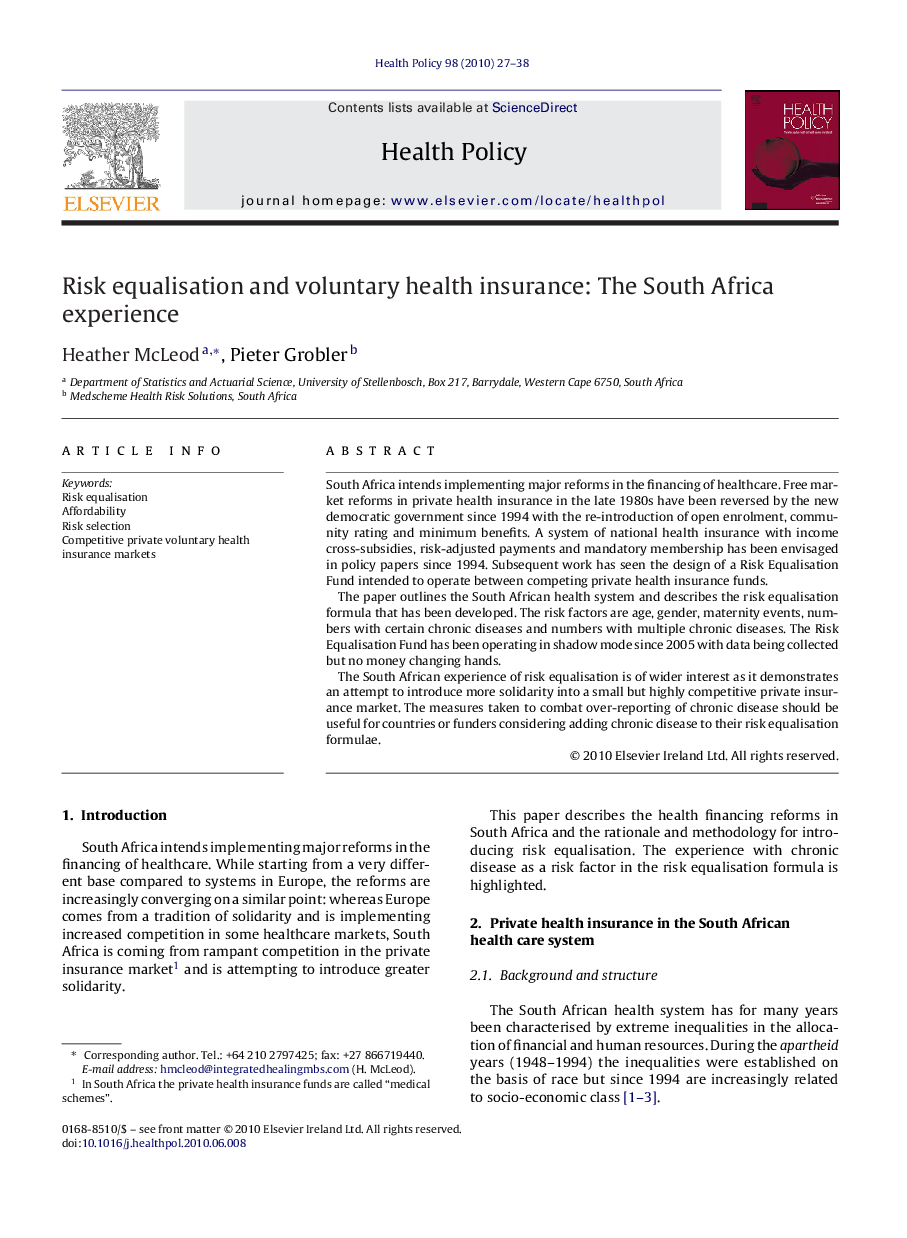| Article ID | Journal | Published Year | Pages | File Type |
|---|---|---|---|---|
| 4198289 | Health Policy | 2010 | 12 Pages |
South Africa intends implementing major reforms in the financing of healthcare. Free market reforms in private health insurance in the late 1980s have been reversed by the new democratic government since 1994 with the re-introduction of open enrolment, community rating and minimum benefits. A system of national health insurance with income cross-subsidies, risk-adjusted payments and mandatory membership has been envisaged in policy papers since 1994. Subsequent work has seen the design of a Risk Equalisation Fund intended to operate between competing private health insurance funds.The paper outlines the South African health system and describes the risk equalisation formula that has been developed. The risk factors are age, gender, maternity events, numbers with certain chronic diseases and numbers with multiple chronic diseases. The Risk Equalisation Fund has been operating in shadow mode since 2005 with data being collected but no money changing hands.The South African experience of risk equalisation is of wider interest as it demonstrates an attempt to introduce more solidarity into a small but highly competitive private insurance market. The measures taken to combat over-reporting of chronic disease should be useful for countries or funders considering adding chronic disease to their risk equalisation formulae.
